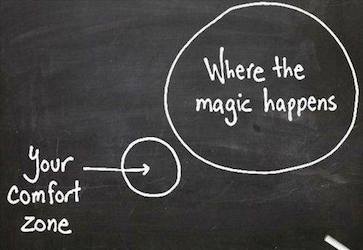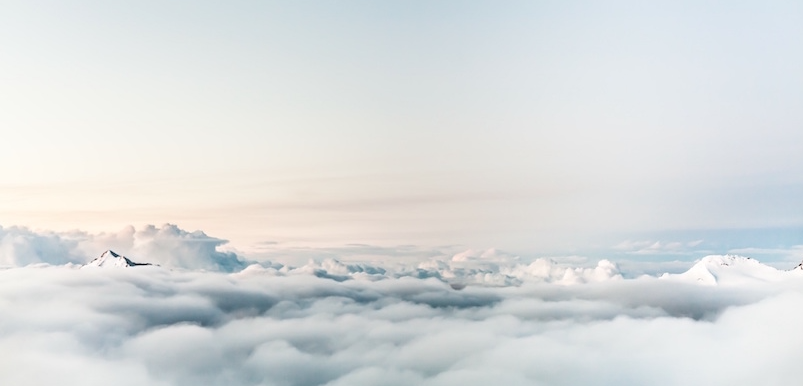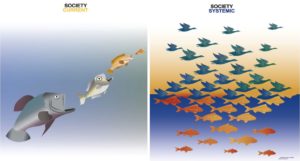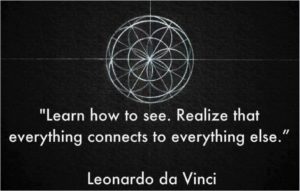Today we are experiencing many daily uncertainties, as the world is quickly undergoing drastic changes. People’s daily lives are disrupted around the world and mobility is immensely impacted (United Airlines have gone from 271 to 13 daily flights). Some activities may thrive in these times, such as organic home-delivery services, while others come abruptly to a hold.
We increasingly ask ourselves: What will come next? What is life after confinement? The truth is, nobody knows. Not the political leaders, the scientists, business leaders or economists. Nobody.
Yes, we have many tools and calculations to help us understand what is to come. Separated by discipline (health scientists, economists, policy makers), tools have helped a lot in making predictions and decision-making. They are usually based on past occurrences.
The size and scale of current challenges are beyond what has been experienced before. The same tools do not serve us anymore as they did in the past. Still, these tools are how we know to respond.
Most experts on climate change know well, to what extent tools are very valuable – they help and give us an indication of what is possible, not predict facts.
“tools … give us indication of what is possible, (they do) not predict facts.”

Harmony and turbulence of our own space
Personally too our lives are undergoing drastic changes. Many people are finding themselves in quite difficult situations. Confined to small spaces as the majority of people on this planet live in cities, and being obstructed in so many things, including attend burials or planned weddings, or being put in challenging situations such as domestic violence or upcoming births.
These situations bring a sense of loss of control and unpredictability, which can be the most difficult to live. They lead to a sense of uncertainty and of course fear.
For those who are fortunate to be in more livable conditions, many people are able to see the opportunity the situation offers. This is a time where most of the hurrying and busyness we fill our lives with has fallen away. The space that this allows – our own personal space – gives us an opportunity to reconnect or better connect with ourselves. Regenerative to some, this same process is challenging to many.
Such space, and the losses we are experiencing remind us to what extent we have a choice in the things we do. We are all discovering new conditions, changing our activities, adapting while we let go of so much. We learn and we try things out. We are reminded that this process of learning takes curiosity, creativity and adapt and changing if we feel so.
We learn and we try things out.
We are also seeing an important change in the way we find time to help others and in how we communicate, be it with friends, family members we didn’t call in a long time or partners, suppliers. Our conversations are more personal. We can be more sincere to the question ‘how are you’ as we offer sincere interest into the wellbeing of the other.

Turbulent business, where is the harmony?
So what about our businesses? As they also undergo structural change, how are we able to adapt them to this new reality?
When at personal level we can take things ‘one day at a time’, with a ‘trial and error’ approach, the same does not apply to organizations. Here we deal with teams of people, with infrastructure, with an administrative structure and of course with clients. Many see some suppliers or clients vanish overnight and employees move to telecommuting. Such changes generate unpredictability and loss of control.
So while we do our best to respond to our new business-reality, we know we are still ‘touching in the dark’. Even the simple question “how long still”, we cannot put a finger on. Cause nobody knows.
To what extent should I adapt my business? Is disruptive change required for my company to survive? What new vision for my organization?

Seeing alternatives and learn to see opportunities
My passion for some years has been to accompany organizations and decision makers in developing alternative visions. Embracing a profound knowledge of systems thinking, I help people find insights and develop experience in navigating unpredictability, because there is a clear difference between unpredictability and uncertainty.
Life itself is intrinsically unpredictable, when you really look at it. But for so long now(*), we have chosen to ‘simplify’ our view of the world. We have made it into something that can be controlled the same as you control the movement of a clock or operate a computer. We simply left out ‘all the rest’.
We simply left out ‘all the rest’
The reality is, this ‘rest’ has always been there. Some call it ‘complex’ or ‘systemic’ or ‘holistic’ or integrated. In recent decades we have started to reconnect with it, through methods such as design thinking, agile management or cross-disciplinary initiatives, demonstrating a change in mindset. Still, too often such initiatives somehow do not lead to the inspiring change they promise.
Aware of so many innovations and familiar to these tools and methods, I have focused on understanding “what it takes” to reach the changes often expressed and sometimes achieved.
What are the conditions required for these initiatives to succeed and others to fail? And when we want to expand or “scale up”, how can we best integrate this when we know that each project, geographical location and team are unique?

Being part of something bigger
Having worked on these questions over many years, to put it very simply, it is in a change of the way we perceive. The same way our world looked so different 2 months ago! Such a shift allows us to see opportunities that were not there before, and enable us to act accordingly.
Systemic Design offers organizations what it takes to explore alternatives and learn what can be done to face the future of our organizations.
As this pandemic is imposing onto everyone to see our lives and our society in a different light, what better opportunity to have “systemic design” support our companies to explore alternative futures possible. And to drive the change we want to see in the world…
Systemic Design offers organizations what it takes to explore alternatives
You are invited to participate in one of the interactive presentations on Systemic Design, offered in English and French. Sign-up for free.
And perhaps you will join one of the Master Classes offered to support you in your work and your organization.
Camila Amaya-Castro Founder and CEO of Innov'Blue S.A.S., which she created to offer her services to organizations that seek to develop sustainable economic activities. In 2019 she launches the Master Class Systemic Design, to help decision makers in the development of alternative visions for their organizations.


Leave a Reply